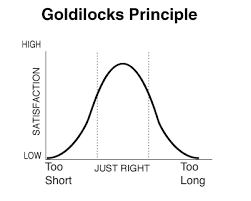 Welcome to another guest post from our friend, Trent Phillips.
Welcome to another guest post from our friend, Trent Phillips.
Hopefully, the importance of proper work creation, work approval, planning, scheduling, work execution, work follow-up, documentation (feedback) and reliability engineering is understood within your organization. The maintenance backlog is a very important functioning part that helps ensure the effectiveness of these processes.
The Goldilocks principle states that something must fall within certain margins without reaching extremes. This is definitely true for your maintenance backlog! Goldilocks would tell you that to be “just right” work must be created and executed with the correct priority, criticality and date. Doing each of these incorrectly will lead to unwanted equipment downtime, higher costs, higher risks, lost capacity and lost profits.
Track and measure the effectiveness of your backlog. Track how long it takes for work to progress through the backlog to completion (30, 60, 90, 120 days, etc) and how much work is in each stage of the process. Monitor the type and amount of work that is feeding your backlog. For example, you should have a healthy percentage of work being generated from proactive activities like condition monitoring and PM tasks. All of these factors are very important indicators that should be used to ensure efficiency in the back log process and proactively manage your equipment maintenance.
Your facility must devote the “just right” amount of resources to the work as well. Having a high backlog could be an indication that the proper resources have not been allocated to complete work. Or it could indicate that the process in place is not efficient or being followed.
The maintenance backlog is a very dynamic process that must be constantly adjusted, updated, completed, reviewed and tracked. Otherwise, your maintenance organization will always struggle with planning, scheduling and execution of work. Follow the lesion from Goldilocks and ensure that your backlog amount and management process is “just right” for your facility.
How well does your organization manage backlog? Many we see have a year or more of backlog. At that level, the is an opportunity to go through and clean out the backlog as much of that will never be done. What are your thoughts? Please comment below so that others can learn too.
